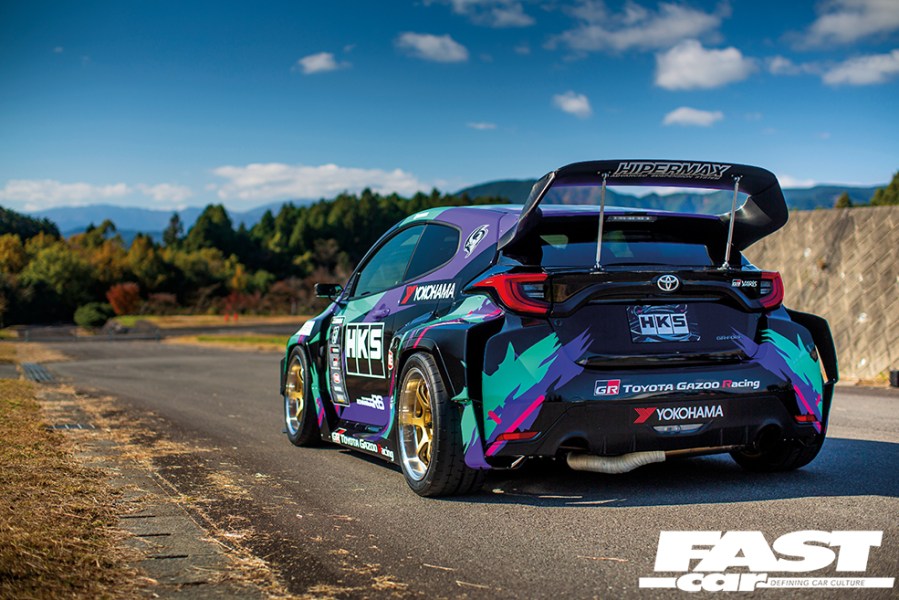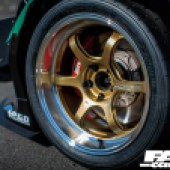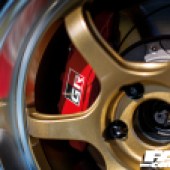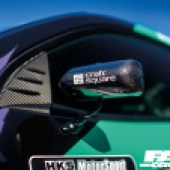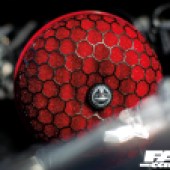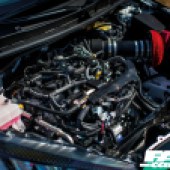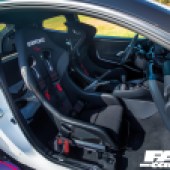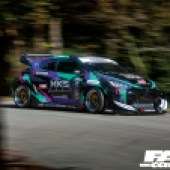With a wild Pandem kit and brutal 475bhp on tap, the HKS GR Yaris is the latest hot hatch kid on the block and it’s already been turned up to eleven.
From Fast Car. Words: Dino Dalle Carbonare & Dan Sherwood. Photos: Dino Dalle Carbonare
If you’re a petrolhead and you’ve not heard of the Toyota GR Yaris, then you must’ve spent the last six months or so living on Mars with NASA’s rover. That’s because, back here on planet Earth, you can’t swing a mangey cat without hitting some motoring journalist spouting off about how Toyota’s tiny tearaway has reignited the hot hatch segment or redefined their perception of what’s possible with a three-cylinder powerplant. Suffice to say, it’s pretty good. And that’s straight out of the box. Imagine what a car like this will be like when the tuning fraternity get their mitts on it and unlock its hidden potential? Well, you can wonder no more, as the men in white coats at iconic Japanese tuning house HKS have already dissected and developed the car to produce the truly insane creation you see on these pages. So stunning is the result, that we’ve sent our man in Japan, Dino Dalle Carbonare, to get under the skin of this miniature monster to see exactly how extreme it is.
As we have previously mentioned, the Gazoo Racing (GR) Yaris is powered by a three-cylinder engine. Not your usual hot hatch powerplant then – especially as it’s packing just 1.6-litres of displacement. It’s ace in the hole, however, is the fact it has a metallic snail strapped to the side of it, which gives the G16E an incredible 270bhp. That’s almost 170bhp per litre! Surely such a small capacity motor can’t be pushed any further than that? Or can it? And if it can, it can’t possibly hope to be reliable… can it?
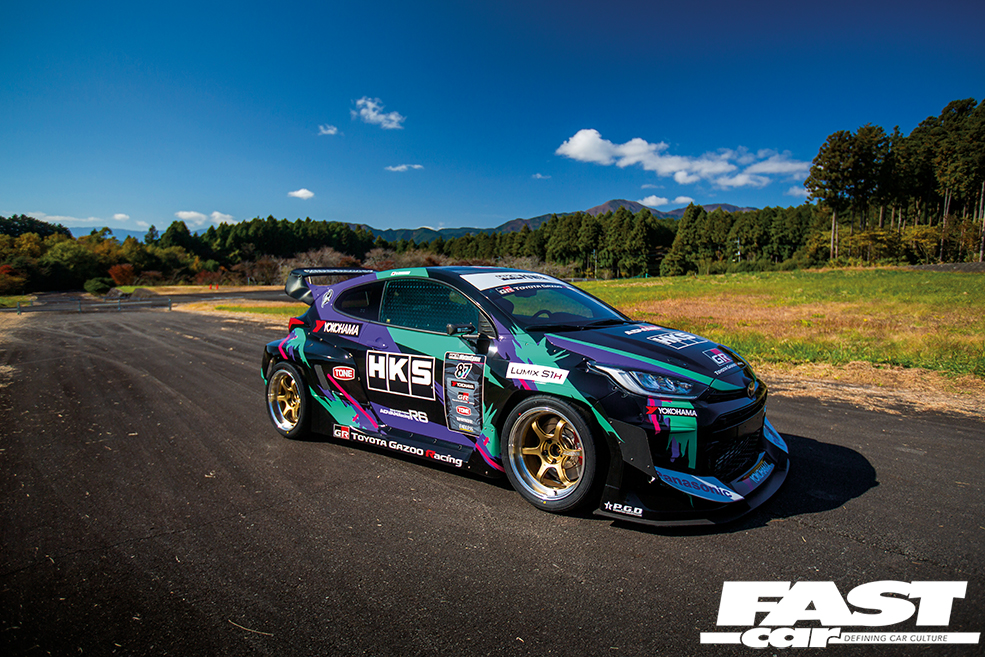
Well, the guys at HKS are well on their way to answering those questions, and on our recent trip down to the Japanese tuning company’s HQ at the base of Mt. Fuji, they pulled out the HKS GR Yaris that they’ve been playing around with for a few months, and gave us a peek into the madness within.
A while back, Gazoo Racing supplied HKS with a couple of pre-production cars so they could get a head start in their GR Yaris aftermarket tuning parts design and production program. As you may have seen on social media, Japanese drift god Daigo Saito got his hands on a GR Yaris too, and that car – and the one we’re looking at today – have both been on the receiving end of a Pandem wide-body aero kit that Kei Miura, of Rocket Bunny fame, managed to produce in lightning-fast speed.
But while Daigo has gone with a tried and tested path to gaining big power with a 2JZ swap in his Yaris, HKS have focused their attention on extracting more power from the factory G16E engine that powers this Gazoo Racing special.
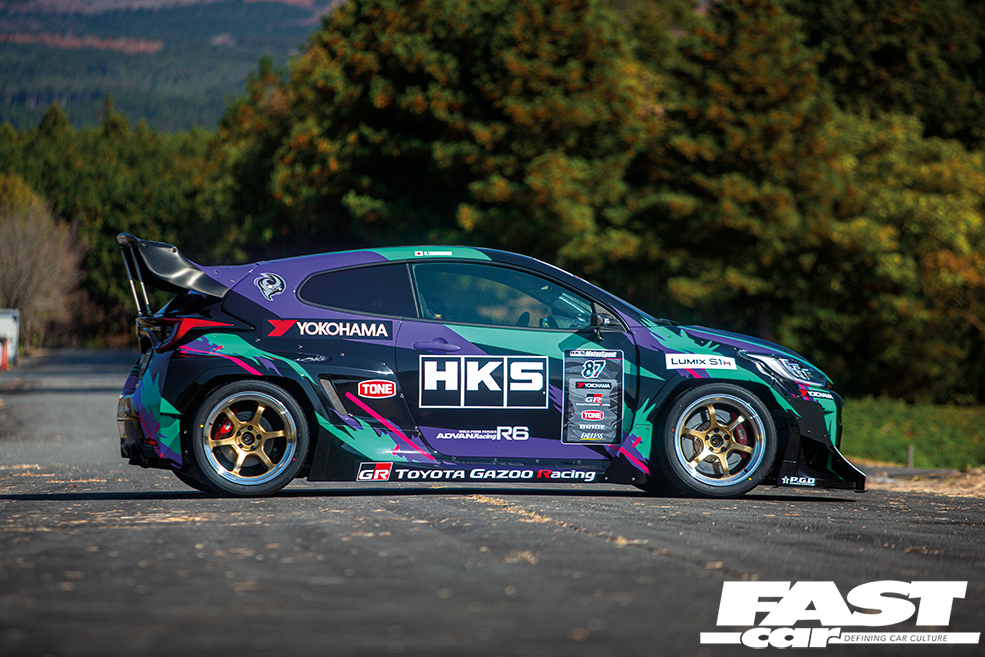
What you’re seeing here is what HKS calls their ‘Step 1’ setup, a functional and well-performing drift and race car that’s destined for exhibition use. HKS driver Nobuteru ‘Nob’ Taniguchi has already put the Yaris through its paces at a series of closed test sessions, where HKS engineers set-up the suspension and fine-tuned the engine settings and the experimental bits and pieces they’ve developed for the model.
The moment we finished shooting the Yaris at HKS’s facility, it was taken back to the workshop where the engine was pulled for the start of ‘Step 2’, which involves tearing the motor down to inspect the internals and looking at possible improvements.
We’d previously seen a digital version of the over-fender kit that Miura-san created for the car, but seeing it in person is something else. The proportions are spot on, and it really does look like a fully-fledged WRC or World RX car, but with some additional JDM spice to it.
To fill its beefed-up arches, the HKS GR Yaris runs what we used to refer to back in the day as ‘GT-R size’ wheels and tyres. That’s a set of 9.5x18in wheels – in this case Yokohama Advan Racing R6s – shod in Yokohama Advan A052 high-grip radials. It’s pretty crazy to think about a Yaris running such a large combo, but they definitely don’t look too big for the car.
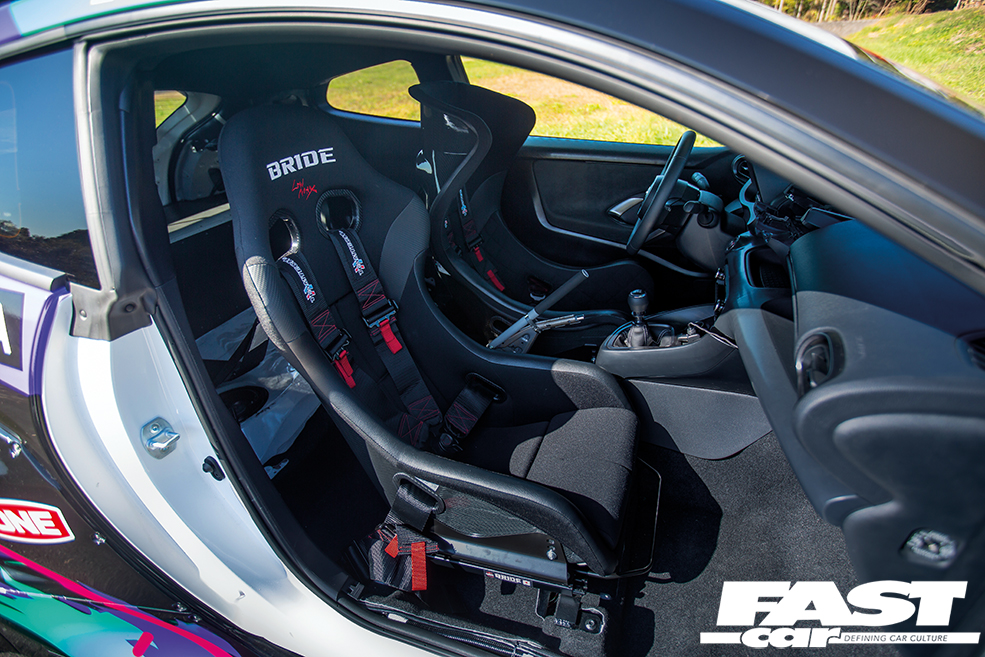
Suspension is enhanced by prototype HKS coilovers, and the car runs custom front and rear arms to extend the hub position and take advantage of the increased body width.
The aggressive stance is further highlighted by the iconic HKS oil-slick graphics, which are an instant visual cue to those in the know that this is a car built to perform.
Of course, no proper JDM demo car would be complete without a pair of Craft Square carbon-fibre mirrors. These simple but effective items have become an industry standard and adorn many a demo car throughout the world.
Like the majority of plumped and preened Instagram models you see these days, one of the best views of the Pandem-kitted Yaris has got to be from the rear, as the gap it leaves along the original body lines gives it serious character. Some might argue as to whether the angular bodylines are actually providing a function to direct airflow and enhance aerodynamics, however, we’d put our money on it being purely aesthetic – but damn, it does look good!
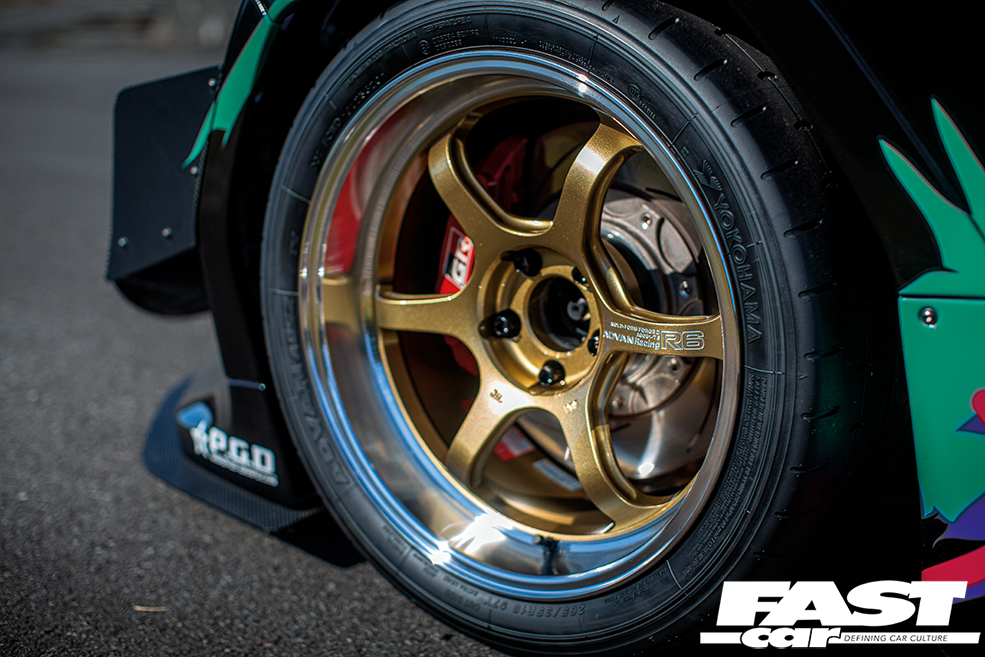
This car runs the red GR brake kit, which comes on the RZ model from the factory when it’s fitted with the optional ‘High Performance’ package (which also adds cool things like the front and rear Torsen diffs and an intercooler water sprayer). The beefy four-pot front and two-pot rear monoblock calipers are yet another reminder of the extent Gazoo Racing has gone with this car. This is a far better and much higher-spec braking system than the GR Supra gets from the production line; and that’s something to think about…
Any rally-inspired aero package needs a serious hatch/roof spoiler, and there’s definitely no missing this one. Two metal rods help support the wing, but again, we think they’re more of a visual addition than actually a necessity to withstand any additional downforce that might be created.
This HKS build has presence for days, but one aspect left us happy but confused. Gazoo Racing developed a trick carbon-fibre roof panel to remove weight from high up in the car and help lower the Yaris’s centre of gravity, but then they finished it off by covering it with a cheap carbon-look vinyl!? Luckily HKS saw fit to do the right thing and peel it off to reveal the glorious real weave lying underneath! Seriously, why would you ever want to cover that up? Toyota, please explain…
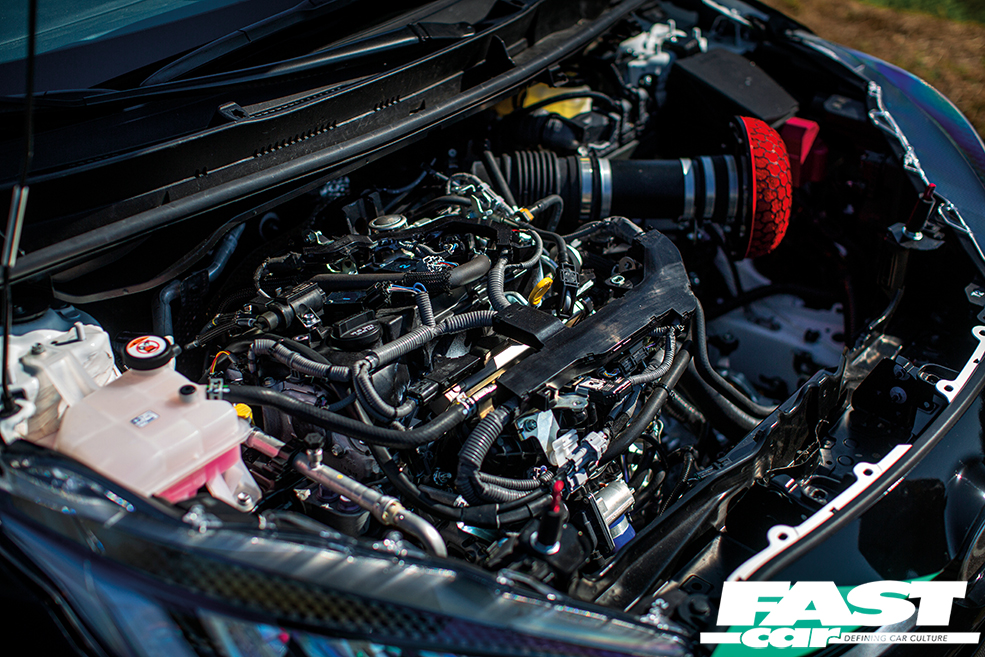
Popping the Yaris’s bonnet is a lesson in disappointment. It may be a potent little lump, but it sure ain’t pretty! Without its plastic engine cover the G16E looks like the back of a washing machine! Modern performance engines may have become as efficient as they are powerful, but they’ve become extremely complicated and downright ugly in the process, and with the GR Yaris, it’s hard to even see the actual engine underneath all the mess of hoses, electronics and ancillaries. HKS has done actually very little to the motor for this first stage of modifications, and has relied on playing with the ECU settings as the primary way of extracting more ponies, continuously refining the tune as they added modifications. The idea has been to push the stock G16E as far it can go, and so far that’s entailed adding a prototype bolt-on turbo and raising boost from the factory 1.4bar (20.6psi) all the way up to 2.7bar (39.7psi). To support this, a prototype intercooler was made up, along with a modified intercooler spray system and a hard pipe kit. The stock air box was also ditched in favour of an HKS Super Power Flow filter. The result of all this is a solid 375bhp – a 100bhp gain over stock. But HKS didn’t stop there. An additional 100bhp was gained through a 100-shot of nitrous oxide, which gives it that mythical total of 475bhp. That’s nearly 300bhp per litre, and is enough juice for Taniguchi to effortlessly four-wheel drift the car around in recent tests.
The most impressive thing is that with an extra 200bhp in play, both the engine and six-speed manual driveline are still working perfectly. Toyota has a long reputation for over-engineering their performance products, and the GR Yaris seems to be no exception to the rule.
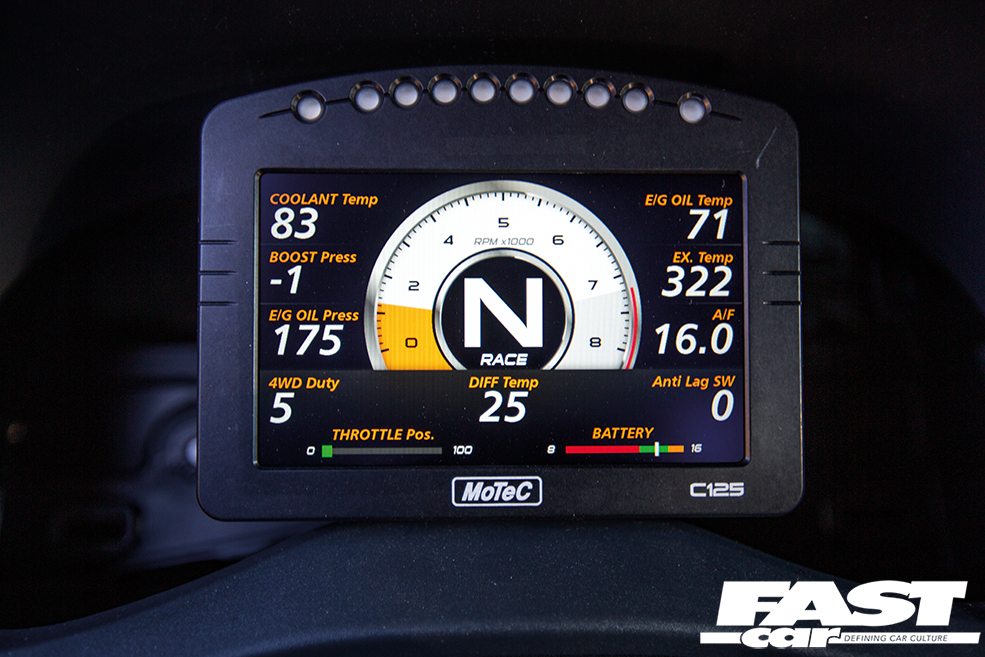
With its custom open exhaust, the engine sounds pretty aggressive with a WRC-like overrun and watching it dart around HKS’s inner test roads really was something else. It also makes total sense why HKS seemed so excited to jump on the second phase of research and development for the G16E. If this thing is so tough in standard form, it will no doubt respond well to an additional and more substantial round of modifications. Could a 500bhp+ GR Yaris be the tuner norm in a few years? That would be pretty crazy!
The GR Yaris is such a good addition to the Gazoo Racing line-up, in which the A90 Supra also fits with its ripe-for-tuning BMW B58 powerplant. It’s news like this that puts a big smile on our face, as we’re always fearful that the days of internal combustion engine tuning are fading fast.
Take a peek inside the cockpit of the Yaris, and it’s obvious as soon as you open the driver’s side door, that this a pre-production car; the trim pieces use experimental plastics and finishes and there are many bits and pieces missing. Not to worry though, as HKS plans to completely gut the car as the tuning process evolves.
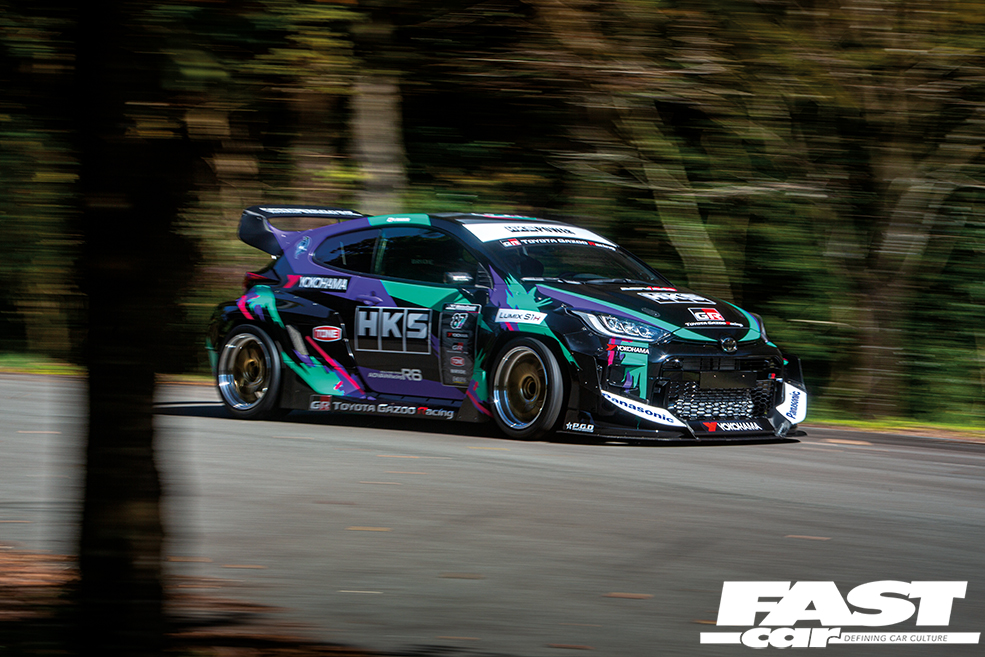
Surprisingly enough, the stock steering wheel has been retained, although this is soon to be swapped out for a race item, most likely one of Taniguchi’s signature Nardi wheels. The OEM dash, however, has seen the bin, having been replaced by a MoTeC C125 colour display/data logger to provide all of the real-time data you’d ever need from the ECU.
HKS once again collaborated with Bride on this project and the car benefits from some of their lightest ever carbon-fibre seats, including a XERO RS for the driver’s side.
This car, along with Daigo Saito’s 2J-powered GR Yaris, certainly helps reignite a passion for hot hatches that some would say has been lacking for some time.
We totally commend Toyota for allowing the GR Yaris to not only happen but also, as HKS has proven, to endow it with a powertrain and driveline that us enthusiasts can play around with for the next decade to come. We’re now just waiting to see how the rest of the tuning world embraces this car. We’re sure that shows like Tokyo Auto Salon will give us some great first examples of aero tuning, while HKS and other parts manufacturers figure out how to offer reliable power packages to their customers. And the UK is not far off the pace either, with a host of the country’s top tuners already throwing their hats into the ring and purchasing their own GR Yaris models to develop and tune. In fact, we’d go so far as to predict that this small yet mighty hatch will be the car to tune in 2021. Watch this space!
Tech Spec: HKS GR Yaris
Engine:
1.6-litre, 3-cylinder, G16E engine, prototype bolt-on turbo, prototype front-mount intercooler with modified intercooler spray system and hard pipe kit, HKS Super Power Flow filter, nitrous oxide injection, custom straight-through exhaust system
Performance:
375bhp + 100bhp nitrous
Transmission:
OEM four-wheel drive, six-speed manual, front and rear Torsen diffs
Suspension:
Prototype HKS coilovers, custom extended front and rear arms
Brakes:
OEM red GR brake kit with four-pot (front) and two-pot (rear) monoblock calipers
Wheels & Tyres:
9.5x18in Yokohama Advan Racing R6 wheels with Yokohama Advan A052 tyres
Exterior:
Full Pandem widebody kit, carbon-fibre roof, Craft Square mirrors, rear wing, HKS oil-slick racing livery
Inteiror:
Pre-production interior, Bride Zero bucket seats and TeamTech harnesses, stripped rear seats, fly-off handbrake modification, MoTeC C125 colour display/data logger

